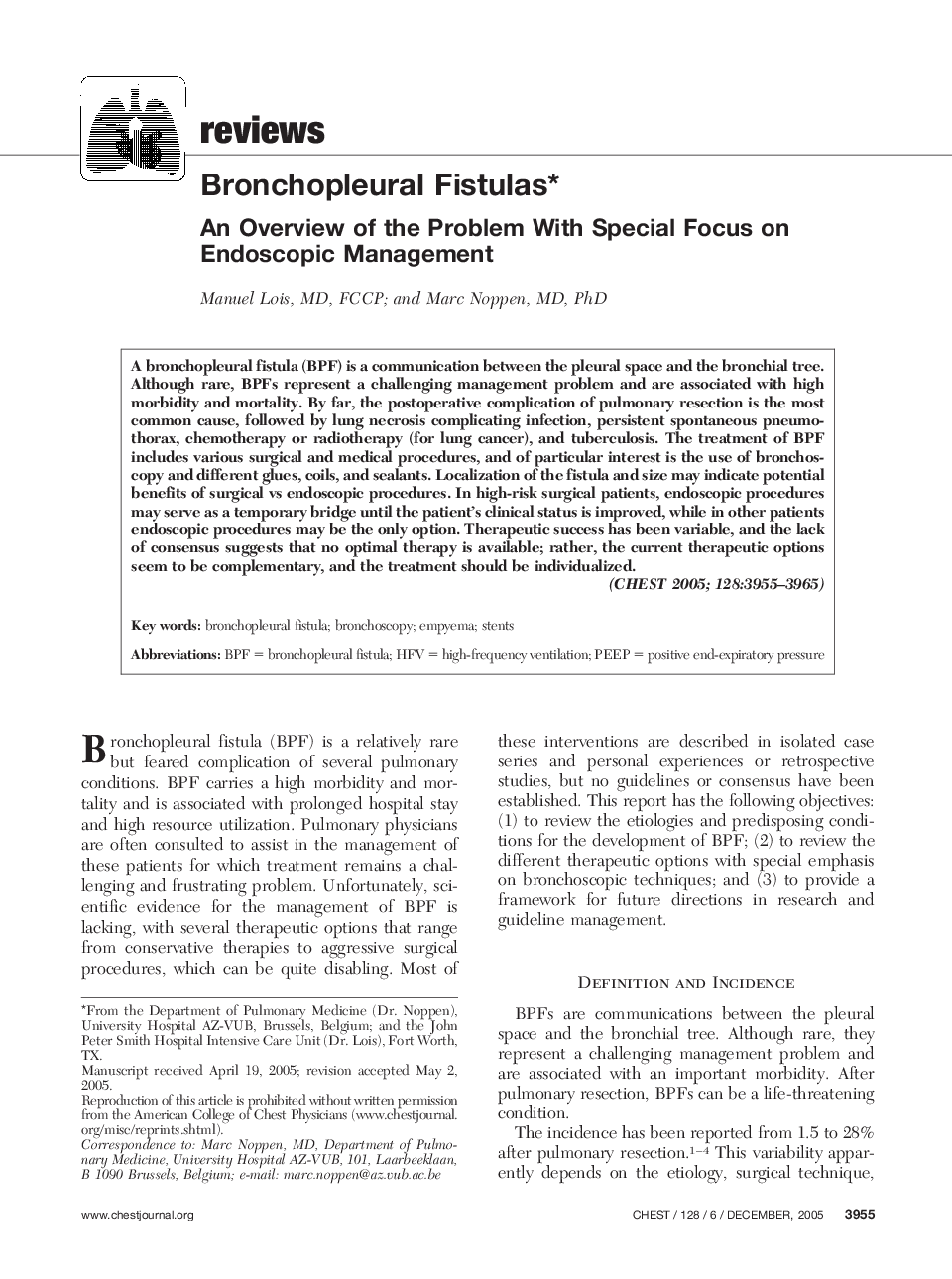| Article ID | Journal | Published Year | Pages | File Type |
|---|---|---|---|---|
| 2906359 | Chest | 2005 | 11 Pages |
A bronchopleural fistula (BPF) is a communication between the pleural space and the bronchial tree. Although rare, BPFs represent a challenging management problem and are associated with high morbidity and mortality. By far, the postoperative complication of pulmonary resection is the most common cause, followed by lung necrosis complicating infection, persistent spontaneous pneumothorax, chemotherapy or radiotherapy (for lung cancer), and tuberculosis. The treatment of BPF includes various surgical and medical procedures, and of particular interest is the use of bronchoscopy and different glues, coils, and sealants. Localization of the fistula and size may indicate potential benefits of surgical vs endoscopic procedures. In high-risk surgical patients, endoscopic procedures may serve as a temporary bridge until the patient's clinical status is improved, while in other patients endoscopic procedures may be the only option. Therapeutic success has been variable, and the lack of consensus suggests that no optimal therapy is available; rather, the current therapeutic options seem to be complementary, and the treatment should be individualized.
